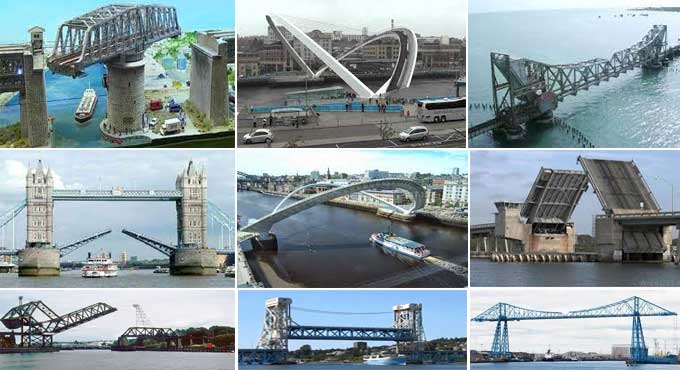
Movable Bridges & Their Construction Types
The purpose of movable bridges is to allow vessels and boats to pass under them by changing the position of the bridge or changing its shape. Since long approaches and high piers do not require this type of bridge, it is generally more cost-effective.
Vessels and ships can use the waterway and vice versa if it opens up to them. Moving bridges come in various forms, and many of them are no longer constructed, but some are still in use today.
Types of Movable Bridges
There are several types of movable bridges used on different continents, such as Swing Bridge, Bascule Bridge, & Vertical Lifting Bridge.
Swing Bridge
A horizontal plane is fixed to the vertical axis so that water traffic can pass through this bridge.
An axis pivot is a normal pier that connects to a bearing and on which a horizontal plane rests. The bridge's ends rest on the abutments when the water traffic is closed.
A pivotal pier should be the only support for the ends of the span when the water traffic must open. As a result, the swing span was lifted using machinery. In contrast to other bridges which move vertically, the swing bridge is horizontally oriented.
Both vertically and horizontally supported swing bridges can carry traffic without being overstressed. Truss bridges or plate-girder bridges are capable of spans with truss.
Bascule Bridge
Bridges on which the base is parallel to the longitudinal axis are referred to as bascule bridges. Bridges on which the base is perpendicular to the longitudinal axis are called drawbridges.
Bridges hinge on a horizontal axis located at their center of gravity, which creates an even weight distribution between both sides.
Bascule bridges are suitable for most situations as movable bridges. Both construction and operation can be carried out economically as well as it is structurally safe and reliable.
Vertical Lifting Bridge
This type of construction is fairly common. An end-to-end span of trusses is supported by towers at both ends. This span is generally counterbalanced in weight. A vertical movement of the span opens the waterway.
Vertical lift bridges call span to drive vertical lift bridges if the machinery responsible for lifting and lowering the span locates on the frame.
It is called a towering drive vertical lift bridge if that machinery mounts on the towers. Bridges of this type are exceptionally stable and can therefore be used in places with large spans.
Special Types of Movable Bridges
This type of bridge is uncommon and rarely built. Several factors contribute to the decline in movable bridge applications, including increasing loads, newly developed materials, and safety concerns. These types of movable bridges include retractable and pontoon bridges, pontoon swings, shear pole swings, foldable, curly bridges, tilted bridges, Transporter bridges, and Jet bridges.
Conclusion
A movable bridge allows boats and vessels to pass through a waterway by changing its position, sometimes even its shape. Because long approaches and high piers are not needed, this type of bridge has lower construction costs. This bridge allows river traffic to flow while road traffic halts.
Construction of such bridges is uncommon because of several reasons, including Increasing application of loads, new materials used, and Safety precautions and concerns.
There are still going to be movable bridges constructed in the United States in the coming years.
There are still many that were built in the early 20th century. Some gears have been repaired using lighter materials, and some gears have been replaced using hydraulics.
To get more details, watch the following video tutorial.
Video Source: HDR


